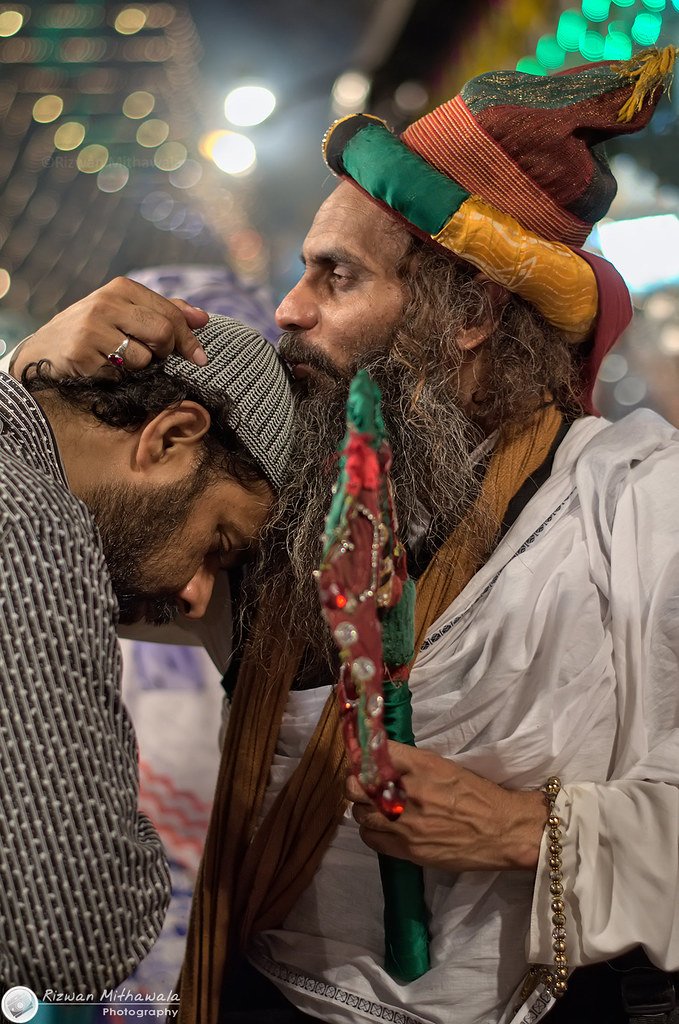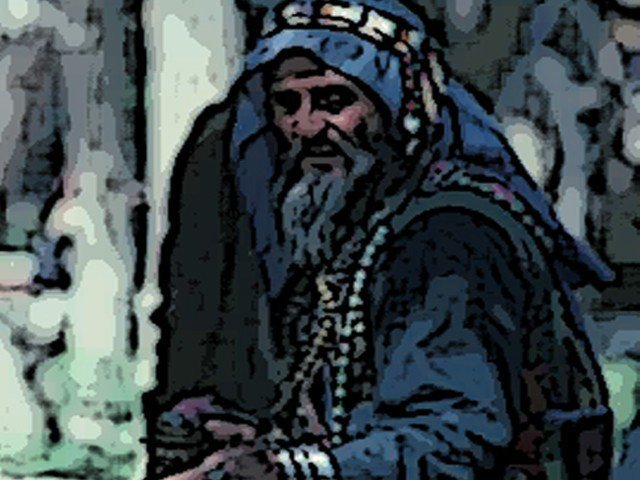Mast Qalander: read about it
In this ruins of the kotla lived a Mast Qalander. every day he would walk down to the tomb of Bhure shah in the vicinity of the Red fort and pray to the"saint with the fiery temper". A big-built man with a barel of chest and a shaggy beard,
In this ruins of the kotla lived a Mast Qalander. every day he would walk down to the tomb of Bhure shah in the vicinity of the Red fort and pray to the"saint with the fiery temper". A big-built man with a barel of chest and a shaggy beard,

his prayers were not the silent outpourings of a heart but the mutterings of one who had lost contact with his surroundings and lived in a world of his own. He would walk down to the shrine of Hare-Bhare and beat his 'chimta' (iron tongs) to announce his arrival. 

The young were overawed by him and the old considered him to be someone from the past who had been visiting the jama Masjid area for long as one cared to remember. like Zanoni,he was likened to an order of mystics who thrive for centuries.
#islam #sufi #masjid #mastqalnder #Allah
#islam #sufi #masjid #mastqalnder #Allah

Rafiq khan,for whom illiteracy was a great boon because it marginalized logic,had this tale to tell about the Mast Qalander.
When Firoz shah took the reins of government into his hands after the sudden death of Mohammad bin Tughlak in sind...
#islam #Tughlak
When Firoz shah took the reins of government into his hands after the sudden death of Mohammad bin Tughlak in sind...
#islam #Tughlak

@IndiaArtHistory @IndoIslamicPage @islamicthought @IslamAndHistory ....he was reminded by a young fakir that the emperor had died not because of the after- effects of a dish of bad fish but because of cruelty to his subjects.
So it was Firoz's lot to undo the harm done by his cousin.
#sufi #firoz #fakir
So it was Firoz's lot to undo the harm done by his cousin.
#sufi #firoz #fakir

@IndiaArtHistory @IndoIslamicPage @islamicthought @IslamAndHistory The new Sultan was somehow impressed by the words of the fakir and brought him along to #Delhi. And when he built his Kotla a special place was marked in it as the fakir's abode.Many dynasties had come and gone but he contined to live in the Kotla and visit the Jama masjid... 

@IndiaArtHistory @IndoIslamicPage @islamicthought @IslamAndHistory During the Mutiny he was at the #Kashmiri Gate, encouraging the bhistis to carry water to the sick and wounded sepoys and after Delhi fell into the hands of the British again,he was back on his daily rounds .
#delhimutiny #mutiny #Gate #british
#delhimutiny #mutiny #Gate #british

@IndiaArtHistory @IndoIslamicPage @islamicthought @IslamAndHistory @IslamicIshtiyaq The Mast Qalander was seen right up to 1947 but after the riots he just disappeared.
some said that he had migrated to Pakistan and others that he had decided to make himself scarce because to the disgusting events,for nobody could even imagine that he might have been...
some said that he had migrated to Pakistan and others that he had decided to make himself scarce because to the disgusting events,for nobody could even imagine that he might have been...

@IndiaArtHistory @IndoIslamicPage @islamicthought @IslamAndHistory @IslamicIshtiyaq ... killed-such was the aura that surrounded him.
It is generally assumed that the order of Mast Qalander originated in Iran,where before the advent of #Islam it was alomst unknown.it came to the India with the Arab invasion of Sind and ...
#mastqalander #Invasion
It is generally assumed that the order of Mast Qalander originated in Iran,where before the advent of #Islam it was alomst unknown.it came to the India with the Arab invasion of Sind and ...
#mastqalander #Invasion

@IndiaArtHistory @IndoIslamicPage @islamicthought @IslamAndHistory @IslamicIshtiyaq @Go_Movie_Mango @getmesomelatte @kamlesm @arpita_pedia ….its adherents spread as far as century,but in Delhi they have existed since the time of the Slave Dynasty.some, however, claim that the order was mostly of #Afgan origin.
Any remarks/suggestions/information regarding Mast Qalander?
@threader_app compile
@threadreaderapp unroll
Any remarks/suggestions/information regarding Mast Qalander?
@threader_app compile
@threadreaderapp unroll

• • •
Missing some Tweet in this thread? You can try to
force a refresh



















